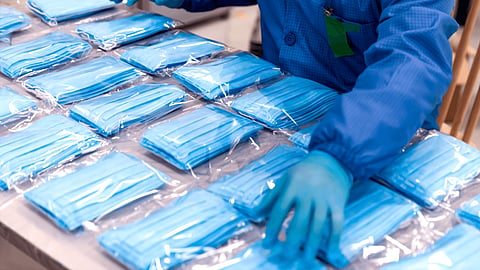Weekend Reads: Does Pandemic Preparedness Matter?
by Kevin Schofield
This weekend's read is a fascinating research paper from the Institute for Health Metrics and Evaluation (IHME), our hometown heroes based at the University of Washington who have cranked out some of the most important analysis on the spread of COVID-19 since the earliest days of the pandemic.
While we have learned much over the past two years about how COVID-19 is transmitted — and how to block it or at least slow it down — there are many mysteries regarding the virus that have yet to be unraveled. One of those mysteries is why both infection and fatality rates vary so much from country to country, defying geography, wealth, and other simple explanations. The IHME took on this question, attempting to discover what factors have correlated with infections and fatalities.
After the Ebola scare in West Africa in the middle of the last decade, the World Health Organization (WHO) led a "Joint External Evaluation" assessment of pandemic preparedness of countries around the world. The IHME looked at both countries' overall scores on that assessment, as well as the component scores (prevention, detection, and response). They also brought in other public health assessments: the Global Health Security Index and healthcare capacity and accessibility indexes.
Surprisingly, they concluded that none of these indexes had any statistically significant correlation with a country's COVID-19 infection or fatality rate. Further, they found that over 60% of the country-by-country variation in infection rate could not be explained, and likewise about 45% of the variation in fatality rate also could not be attributed to any specific cause.
What did make a difference? There's a two-part answer. First, both infection rate and fatality rate were affected to an extent by a handful of factors largely outside of policymakers' control. For infection rate, what mattered a bit was altitude (what proportion of a country's population lived under 100 meters), GDP per capita, and how much seasonal variation there was in the weather. For fatality rate, the age demographics of the country mattered a lot, which matches what we see with our own eyes: younger people tend to have less severe cases of COVID. Also, GDP per capita and average body mass index (BMI, a somewhat controversial assessment of whether someone is overweight) mattered, to a much lesser extent, in fatality rate.
Second, trust mattered: both trust in government and interpersonal trust. Together they accounted for almost a quarter of the variation in infection rate. In addition, the level of government corruption affected both infection rate and fatality rate. The IHME found that the trust indexes corresponded to levels of vaccine coverage, and lower levels of government corruption correlated with residents' willingness to reduce their mobility (which in turn reduced the spread of the virus).
The IHME suggests that the fact that the pandemic preparedness indexes didn't correlate with infection or fatality rates might in part be a failure of the indexes themselves, in that they don't account for leadership failures among officials or for general government dysfunction. A country may have a large stockpile of masks and other personal protective equipment (PPE), but if a corrupt official is selling them on the black market instead of distributing them where they are needed, then it won't help keep their infection rate down.
The IHME also points out, in a moment of optimism, that trust is something that leaders can foster, even during a crisis. Though as the old adage goes, trust can be slow and hard to gain and quick and easy to lose. Here in the United States, the history of the outrageous 1932 Tuskegee syphilis study on African-American men in Alabama, and the predictable effect that it initially had on many Black people's willingness to get vaccinated for COVID, is a testament to the importance of trust in responding to public health crises.
Two years in, COVID-19 is still a mystery in many ways. Researchers are still trying to understand whether some people might have a natural resistance to the virus, why it causes an entire spectrum of disease in different people ranging from "no symptoms" to death, how long the immunity from a vaccine or an exposure to the virus might last, why some people experience "long COVID," and of course why there is so much variation from one country to the next. But now there is enough data collected to start solving some of these mysteries. We should expect new revelations on a fairly regular basis from this point on as medical and public health researchers churn through the data and discover connections.
Kevin Schofield is a freelance writer and publishes Seattle Paper Trail. Previously he worked for Microsoft, published Seattle City Council Insight, co-hosted the "Seattle News, Views and Brews" podcast, and raised two daughters as a single dad. He serves on the Board of Directors of Woodland Park Zoo, where he also volunteers.
Featured Image: Photo by Inkheart/Shutterstock.com.
Before you move on to the next story …
The South Seattle Emerald™ is brought to you by Rainmakers. Rainmakers give recurring gifts at any amount. With around 1,000 Rainmakers, the Emerald™ is truly community-driven local media. Help us keep BIPOC-led media free and accessible.
If just half of our readers signed up to give $6 a month, we wouldn't have to fundraise for the rest of the year. Small amounts make a difference.
We cannot do this work without you. Become a Rainmaker today!
Help keep BIPOC-led, community-powered journalism free — become a Rainmaker today.


